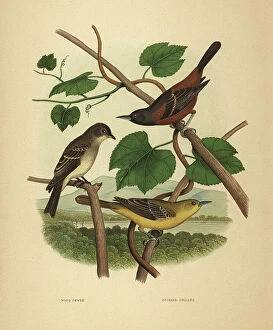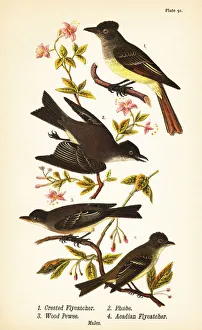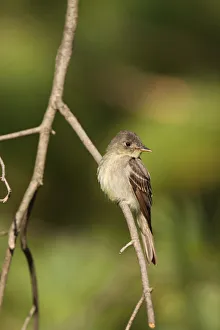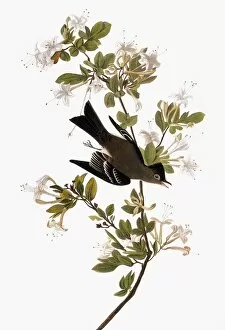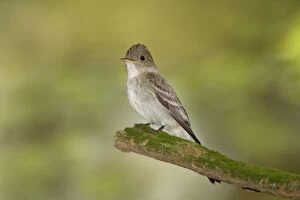Contopus Virens Collection
"Exploring the Melodious World of Contopus virens: The Eastern Wood Pewee" In the realm of avian melodies, few can match the enchanting tunes of Contopus virens
All Professionally Made to Order for Quick Shipping
"Exploring the Melodious World of Contopus virens: The Eastern Wood Pewee" In the realm of avian melodies, few can match the enchanting tunes of Contopus virens, commonly known as the Eastern Wood Pewee. This captivating species belongs to a group of flycatchers that includes other notable members like the Great Crested Flycatcher (Myiarchus crinitus), Eastern Phoebe (Sayornis phoebe), and Acadian Flycatcher (Empidonax virescens). Found in various regions across North America, including Ohio, USA, and Portugal, this small yet charismatic bird possesses a unique charm that captivates both seasoned birdwatchers and casual observers alike. With its olive-brown plumage blending seamlessly with its woodland habitat, it is often challenging to spot these elusive creatures. The Eastern Wood Pewee's melodious song resonates through dense forests and open woodlands during their breeding season from May to July. Their distinctive call consists of a clear "pee-a-wee, " repeated at regular intervals. These vocalizations serve multiple purposes - attracting mates, defending territory boundaries against rivals or predators like snakes or squirrels. Despite sharing similarities with other flycatcher species such as their slender build and insect-catching behavior mid-air, it has distinct features that set them apart. Sporting a pale yellow belly contrasting with darker upperparts and two white wing bars on each wing distinguishes them from their counterparts. These agile birds are skilled aerial hunters; they perch patiently on branches before launching themselves into flight to snatch unsuspecting insects mid-air using their sharp beaks. Preferred prey items include flies, beetles, moths – an essential contribution towards maintaining ecological balance by controlling pest populations. Conservation efforts play an integral role in preserving these delightful birds' habitats amidst increasing deforestation threats worldwide.

